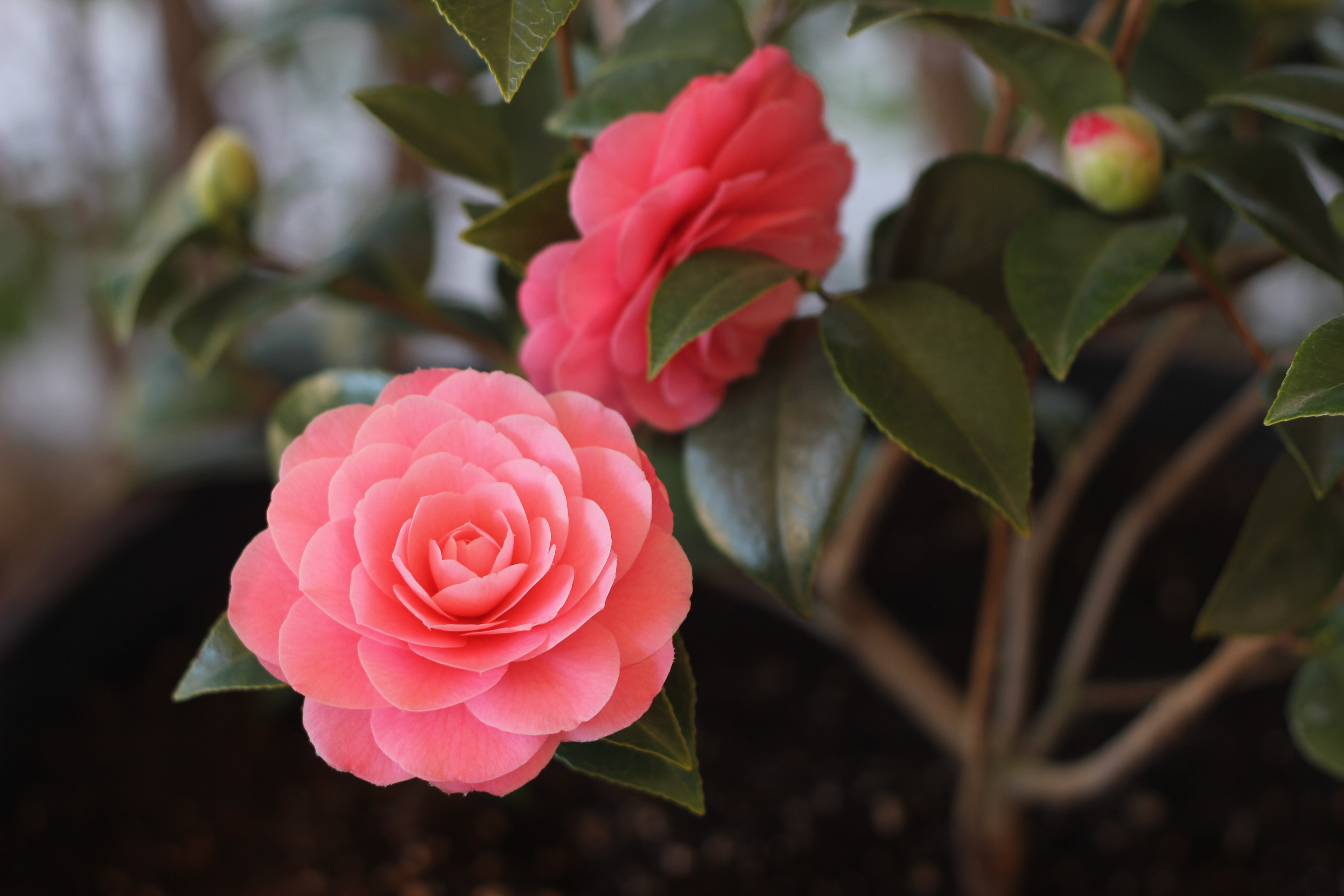What is my camellia trying to tell me? The best way to find out is by looking at its leaves.
Camellias don’t like the scorching sun in Arizona nor the alkaline soil of our Sonoran Desert. If kept in pots, it is much easier to maintain the right soil condition. Furthermore, the plant can be moved if the conditions prove too sunny, too windy, too wet or too cold in winter. Camellias do great in pots on a covered patio, in the shade (for the most part). The few camellias we have in the ground are planted either on the north side of our house or under a large tree that provides dappled to complete shade. Whenever planted in the ground, the soil conditions need to be drastically amended. The hole for the plant needs to be about three times as wide as the root ball and be filled with potting soil that has been amended with Peat Moss (adds acidity) in a ratio of about 50:50. The reason is that camellias like acidic soil, and ours in the desert is alkaline. Whenever a camellia in the ground grows its roots out of its medium into the desert soil, one will soon be able to tell by observing the leaves. They turn from dark green to a lighter green yellowish color. Once the camellia is well established, the soil conditions can be kept up to the right level with regular fertilizing (I use Miracle Grow fertilizer for acid-loving plants).
Camellia leaves change in color or shape for different reasons. If there is too much sun, the leaves get sunburned. They literally turn brown, a uniform dark brown color. If the plant stands in water for too long, especially during the hottest days of the year, the camellia may develop root rot. They don’t like wet feet. The leaves will change color, gradually from the outside to the inside of the leaf, but the brown discoloration will not be uniform (as is the case with sun scorched leaves). Instead, they will likely turn into a watery looking brown-green discoloration. I’ve attached pictures of all the scenarios on my camellias and hope they will be helpful for a clear diagnosis. Furthermore, the leaves may curl or grow out slightly deformed if the camellia is in need of moisture. One that lacks fertilizer usually develops yellowish leaves. Once fertilizer has been applied, the new growth will again appear dark green which will confirm that the diagnosis was right. When planted in the ground, poor soil conditions will also show in the yellowing of the leaves. In that case, the soil around the plant should be amended with potting soil and Peat Moss. In addition, a fertilizer for acid-loving plants should be applied on a regular basis.
Hope this helps! Have fun with your camellias and enjoy their beautiful flowers!
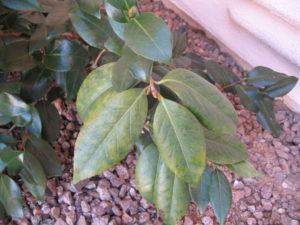 poor soil conditions
poor soil conditions
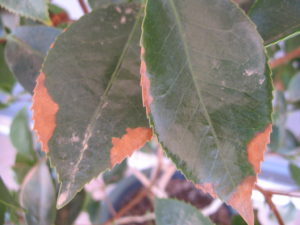 sunburned leaves
sunburned leaves
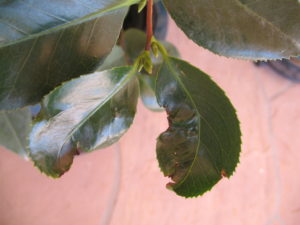 lacking moisture
lacking moisture
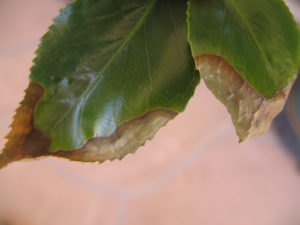 standing in water (root rot)
standing in water (root rot)
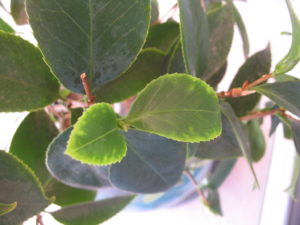 nutrient deficiency
nutrient deficiency
